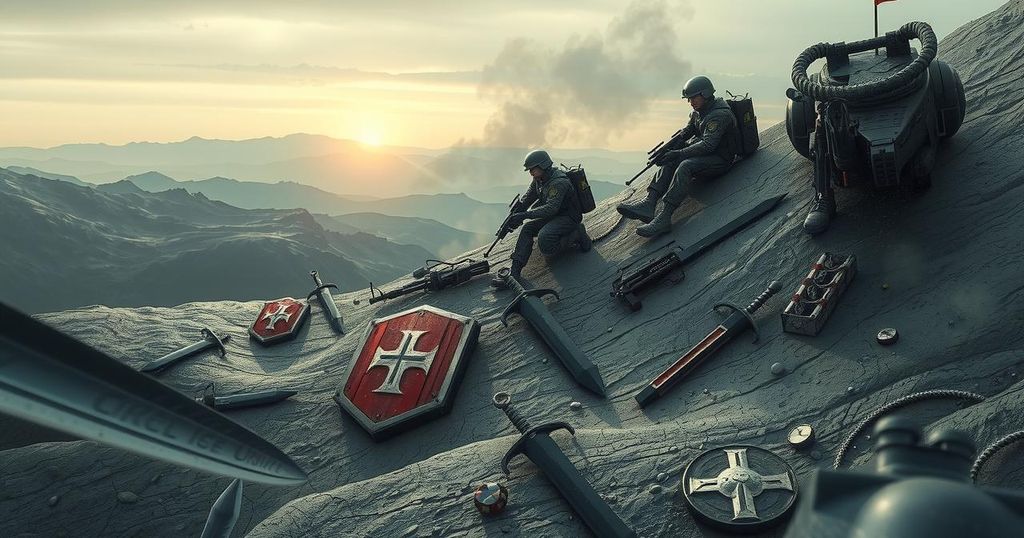The Democratic Republic of Congo’s military is failing to combat the M23 militia, which has overtaken key areas in the east. President Tshisekedi’s efforts to strengthen the army have been ineffective, worsened by external support for M23 from Rwanda. The crisis emphasizes notable internal weaknesses and raises concerns about regional stability.
The ongoing conflict in eastern Democratic Republic of Congo (DRC) has revealed significant deficiencies within the Congolese military. Known for issues such as corruption and underfunding, the army is struggling against the M23 militia, which has successfully captured major cities and airports. President Félix Tshisekedi’s attempts to bolster military strength have faltered, resulting in a loss of domestic support and stalled peace efforts.
The M23 militia benefits from the support of neighboring Rwanda, which has provided training and arms, although Rwanda denies controlling the group. According to experts, this conflict is marked by two main factors: external support for M23 and the internal weaknesses of the Congolese military. President Tshisekedi cited the infiltration of foreign elements in his army and attributed part of the blame to his predecessors for failing to address these vulnerabilities.
This situation has highlighted not only the failing military structure but also the complexities of regional politics affecting stability in the DRC. The military’s lack of resources and internal divisions contribute to its inability to combat the relatively smaller M23 militia effectively, raising questions about future governance and security in the region.
The Democratic Republic of Congo is facing a critical crisis as its military struggles against the M23 militia, exposing long-standing issues such as corruption, underfunding, and internal conflict. The support from Rwanda further complicates the situation, revealing the geopolitical dynamics at play. Without significant reforms and external support, the DRC may continue to grapple with instability and diminished governance.
Original Source: www.nytimes.com




